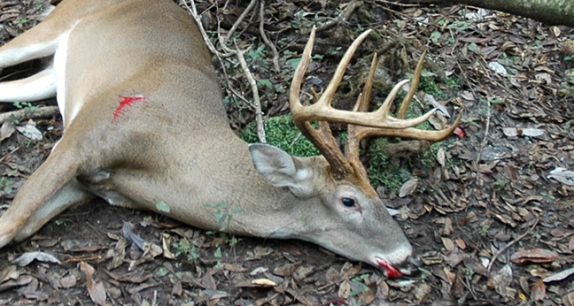To hone your skills at estimating the age of bucks in trail-camera photos, nothing you can do is more important than ground-truthing. That means killing bucks that you believe meet your age goal, pulling their jawbones, and comparing jawbone age estimates with your earlier estimates from when the bucks were alive. This exceeds the benefits of any video, book, seminar or magazine article on aging live bucks, because only you get to work with the local deer you actually manage and hunt.
Build a profile on every buck killed where you hunt. Combine measurable features like body weight, neck girth, antler spread and antler beam length with photo features like “belly sag” and “that short-legged look.” Over time, you can develop averages by age class that help refine future judgements of new bucks in trail-camera photos.
Refine is a key word. This is not a foolproof system, because these characteristics usually overlap multiple age classes (bucks of different ages having the same inside spread, for example), but knowing the averages by age class can help make the tough calls a little easier. You will still mistake some young bucks for older deer, and some older deer for young bucks, but surprises will occur less often with more experience.
The hinge on which all of this swings is the jawbone. Ensure that your jawbone age estimates are as reliable as they can be by having each jaw aged by as many trained observers as possible, including the nearest state agency wildlife biologist, to reach a consensus age.
Also, it’s important to understand the limitations of this method. Tooth replacement patterns can guide you in accurately sorting three age classes: fawns, yearlings (1½ years), and all adult deer 2½ or older. Then, tooth wear patterns can help you reliably sort adults into two groups: middle-aged (3½ and 4½) and mature adults (5½-plus). To satisfy your curiosity in some cases, you can more reliably pin down the exact year after 3½ by using the services of a tooth-aging lab. In a recent issue of Quality Whitetails, Brian Murphy told the amazing story of a buck that was suspected of being as old as 10½ and the surprising results – 15½! – provided by the cementum annuli rings in the buck’s teeth!
Results from lab analysis, however, aren’t necessary to measure QDM success because in most programs your goal is to build numbers of bucks age 3½ and older. Determining whether a particular buck is 5½ or 7½ is neat but not critical information, because either way you’ve produced a fully mature buck and should celebrate!
That’s why QDMA promotes the jawbone aging technique as often as we can, like in our Deer Steward classes, our educational posters, and in a new three-part video series we produced. So, even if you don’t know how to age a jawbone, begin collecting one from every deer you kill, bucks and does. Label it, save it, then learn how to age it. You get an amazingly broad view of deer by looking at a few small teeth.
If you need to hone your jawbone-aging skills, check out our educational video series, including a challenging quiz at the end:
Part 1: Estimating Deer Age by Tooth Replacement
